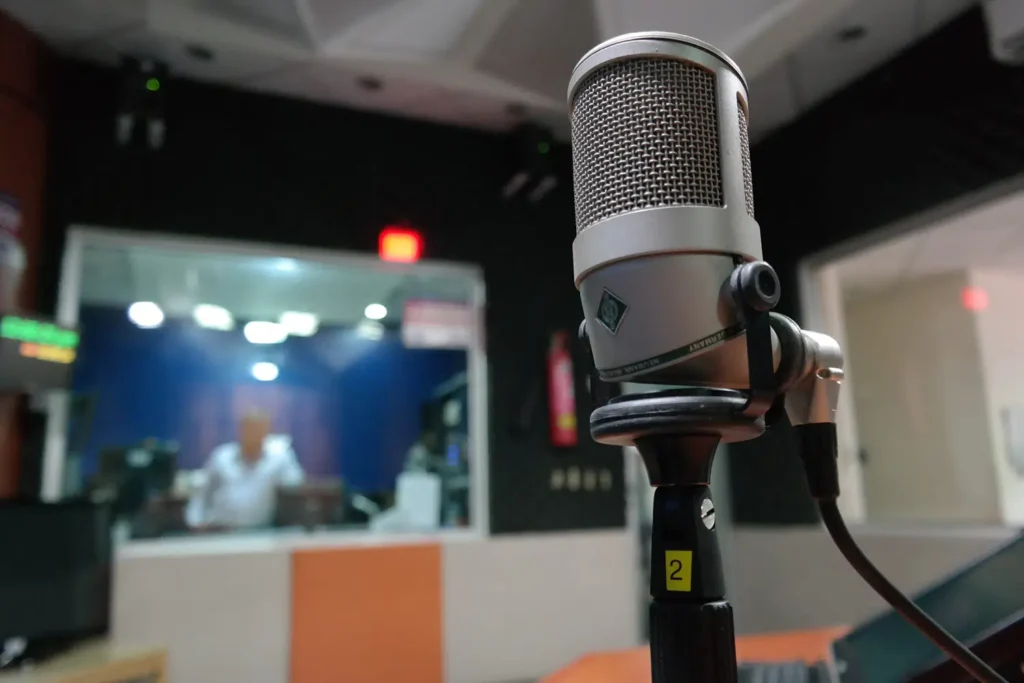Introduction:
Metal music, with its raw energy and powerful vocals, has captured the hearts of music enthusiasts worldwide. At the forefront of this genre is metal screaming, a vocal technique characterized by aggressive, guttural sounds that are integral to the intense and dynamic nature of metal music. However, mastering metal screaming requires more than just raw talent. It demands discipline, practice, and a deep understanding of safe vocal techniques. In this comprehensive guide, we’ll delve into the world of metal screaming, exploring the various vocal techniques, the importance of proper vocal care, and strategies for maintaining vocal health while delivering powerful performances.

Understanding Metal Screaming:
Metal screaming, encompasses a range of vocal techniques used to produce intense and aggressive sounds commonly heard in metal music. These techniques include fry screaming, false cord screaming, and vocal distortion. Each skill requiring precise control of the vocal cords and also resonating chambers to achieve the desired sound. While metal screaming may appear effortless when executed by seasoned vocalists, it is a skill that requires proper training and technique to avoid vocal strain and injury.

Mastering Vocal Techniques:
Fry Screaming:
Fry screaming involves producing vocals with a creaky or fry-like quality by engaging the vocal fry register, the lowest vocal register characterized by a crackling or popping sound. To master fry screaming, vocalists should focus on relaxed vocal cord closure, controlled airflow, while focusing on proper resonance placement. Practice exercises such as vocal fry sirens and scales containing vocal fry. This can help develop the coordination and control needed for fry screaming while minimizing strain on the vocal cords.
False Cord Screaming:
False cord screaming utilizes the false vocal cords, a pair of soft tissue folds located above the true vocal cords, to produce aggressive and distorted sounds. Unlike fry screaming, which relies on vocal fry resonance, false cord screaming involves engaging the false cords to create a more abrasive tone. Proper technique is essential to preventing vocal damage. This includes maintaining adequate breath support, avoiding excessive tension in the neck and throat muscles, and gradually building vocal strength through consistent practice and warm-up exercises.
Vocal Distortion:
Vocal distortion techniques, such as rasp, grit, and vocal fry distortion, add texture and grit to the voice, enhancing the intensity and emotion of metal vocals. However, excessive use of vocal distortion without proper technique can lead to vocal fatigue and strain. Vocalists should focus on controlled airflow, relaxed throat muscles, and precise articulation to achieve distortion effects safely. Additionally, incorporating vocal exercises targeting resonance, flexibility, and endurance can help vocalists. This will improve the control and stamina needed for sustained distortion vocals.

Vocal Health and Safety:
While mastering metal screaming techniques is essential for delivering powerful performances, prioritizing vocal health and safety is paramount to prevent long-term damage and maintain vocal longevity. Here are some key strategies for safeguarding vocal health:
Proper Warm-Up and Cool-Down:
Before engaging in metal screaming or any vocal performance, vocalists should warm up their voices. Start with gentle vocal exercises and stretches to loosen the vocal cords and promote blood flow to the vocal folds. Similarly, cooling down the voice after a performance with gentle humming or straw phonation can help reduce vocal fatigue and tension.
Hydration and Vocal Hygiene:
Adequate hydration is crucial for maintaining vocal health, as it keeps the vocal folds lubricated and prevents dryness and irritation. Vocalists should drink plenty of water throughout the day and avoid excessive caffeine and alcohol consumption, which can dehydrate the vocal cords. Additionally, practicing good vocal hygiene, such as avoiding throat-clearing and smoking, can help prevent vocal irritation and inflammation.
Rest and Recovery:
Just as athletes require rest and recovery to prevent injury and fatigue, vocalists need sufficient downtime to allow the vocal cords to heal and regenerate. Incorporating rest days into a vocal practice regimen and prioritizing quality sleep can promote vocal recovery and rejuvenation, enhancing vocal stamina and resilience over time.
Vocal Training and Technique:
Continuous vocal training and technique refinement are essential for minimizing vocal strain and maximizing vocal performance. Working with a qualified vocal coach or instructor who specializes in metal screaming can provide invaluable guidance and feedback to help vocalists develop safe and effective vocal techniques tailored to their individual needs.

Common Vocal Challenges and Solutions:
Despite diligent practice and adherence to safe vocal techniques, vocalists may encounter challenges such as vocal fatigue, hoarseness, and vocal strain. Here are some common vocal challenges faced by metal vocalists and strategies for overcoming them:
Vocal Fatigue:
Vocal fatigue, characterized by a feeling of vocal tiredness or weakness, can occur due to overuse or improper vocal technique. To combat vocal fatigue, vocalists should prioritize vocal rest, stay hydrated, and avoid pushing the voice beyond its limits. Incorporating vocal warm-ups and cooldowns into a practice routine can also help reduce vocal fatigue and maintain vocal stamina.
Hoarseness:
Hoarseness, or a raspy, strained quality in the voice, can result from vocal misuse, vocal trauma, or environmental factors such as dry air or allergens. To alleviate hoarseness, vocalists should rest their voices, hydrate adequately, and avoid speaking or singing loudly. Steam inhalation, throat lozenges, and vocal restorative exercises can also help soothe vocal irritation and promote vocal recovery.
Vocal Strain:
Vocal strain occurs when the vocal cords are subjected to excessive tension or force, leading to discomfort, pain, and diminished vocal function. To prevent vocal strain, vocalists should focus on relaxed vocal production, proper breath support, and maintaining optimal vocal resonance. Avoiding screaming or singing in unhealthy vocal ranges and taking regular breaks during practice sessions can also help prevent vocal strain and promote vocal health.

Conclusion:
Mastering metal screaming requires dedication, discipline, and a commitment to safe vocal techniques. By understanding the principles of vocal production, practicing proper vocal care, and seeking guidance from qualified instructors, vocalists can unleash the full potential of their voices while safeguarding their vocal health and longevity. With perseverance and care, metal vocalists can continue to captivate audiences with their electrifying performances for years to come, ensuring that the spirit of metal music remains alive and thriving in the hearts of fans worldwide.
More About Our Vocal Coaches
We understand that transitioning is often difficult and undeniably stressful for many people. While Dysphoria affects everyone differently, having an affirming voice that feels right for you can be a major factor in managing dysphoria.
Our vocal coaches help you find your voice by:

Dependable
⸺ & ⸺
Diligent
Having an advanced contact and booking platform to be sure that Your Lessons Now is always there for you, and our admin staff will always be here to help.

Helpful
⸺ & ⸺
Human
Providing a human touch to your scheduling and inquiries, our vocal coaches and also our admin team will assist you every step of the way.

Loud
⸺ & ⸺
Proud
Understanding the importance of providing a judgment-free and empathetic and caring environment, since many of us are LGBTQIA+ ourselves.

Secure
⸺ & ⸺
Respected
Our vocal coaches have extensive training, experience, degrees, and awards to further ensure the best learning environment for our students.
Follow Us on Social Media